Travel to Morocco: the ultimate guide to culture, adventure, and hidden gems
Morocco sits at the meeting point of Africa and Europe, yet it feels entirely its own. Red ramparts surround busy medinas, while snow caps rise beyond palm groves. Atlantic winds brush blue‑painted alleys, and desert nights fall under skies so clear they look polished. Such variety turns a trip into a collection of distinct moments. You might bargain for spices at dawn, ride a camel by dusk, then share a slow‑cooked tagine beneath the stars. This guide maps the experiences that create that mosaic, so you can shape a journey that fits your pace, your budget, and your curiosity.
Why Morocco should be your next travel destination
Morocco rewards travelers who look for richness beyond familiar borders. First, the ease of entry stands out. Citizens of the United States receive a ninety‑day visa on arrival, and direct or one‑stop flights reach Casablanca and Marrakech from several major hubs. Once landed, moving around is straightforward thanks to a growing high‑speed rail network, reliable intercity buses, and a lattice of modern highways.
The country’s geographic diversity keeps each day fresh. A four‑hour drive can carry you from Atlantic surf breaks to cedar forests, then down to Saharan dunes that shift with every breeze. This range allows hikers, surfers, history fans, and culinary explorers to share the same itinerary without compromise.
Culture opens doors just as wide. Morocco blends Arab, Amazigh, Andalusian, Jewish, and French influences, yet local identity remains strong. Music festivals in Essaouira celebrate gnawa rhythms that pre‑date jazz, while Fes still hosts artisans who hand‑cut zellige tiles as their ancestors did in the fourteenth century. Hospitality binds these threads. A stranger is rarely left without mint tea, a question rarely goes unanswered, and an invitation often arrives before you can look lost.
If you want to weigh these draws in more detail, the top reasons to visit Morocco outline how nature, culture, and accessibility meet in ways few destinations match. The rest of this guide builds on that foundation, offering routes, tastes, and practical tips to turn inspiration into an itinerary.
Morocco’s most iconic cities and what makes each unique
Each Moroccan city carries its own pulse. Some hum with trade and tradition, others drift at a slower rhythm, shaped by wind or altitude. Choosing where to go depends less on what’s “best” and more on what kind of experience you’re after. Big city or small town, coast or mountain the contrasts are part of the charm.
Marrakech hits your senses first. Within the red walls of its medina, life moves fast. Mopeds zip past donkeys, vendors call out prices, and the smell of spices clings to every alley. Jemaa el‑Fna square becomes a theatre each evening, full of drums, smoke, and stories. But there’s quiet, too, in the cool shade of a riad courtyard or the tiled halls of the Bahia Palace.
Fes goes deeper. It’s home to the world’s oldest university and a maze-like medina where artisans still dye leather, hand-chisel plaster, and fire clay into mosaic. It demands slower steps and rewards them with layers of history. A guide helps, but even wandering without aim teaches you how the city breathes.
Chefchaouen, the “Blue Pearl,” rests in the Rif Mountains. Its blue-washed walls calm the eye after the chaos of city life. Days here start slow, with a walk to the Spanish Mosque lookout, and end with simple meals and mountain air. Travelers come for the color, but many stay for the peace.
Essaouira trades stone walls for sea spray. Its medina opens onto ramparts, the sound of gulls competes with gnawa music, and the grilled fish arrives straight from the harbor. It’s popular with surfers and artists—and anyone needing a break from inland heat.
Smaller cities like Tangier, Rabat, and Agadir each add something different. Tangier bridges Europe and Africa, Rabat offers calm with its wide boulevards, and Agadir suits beach lovers with its long sandy coast.
To explore each of these places in more depth, the city-by-city guide to Morocco helps compare atmosphere, highlights, and the kind of traveler each city suits best. Whether you’re planning two weeks or just a few days, knowing what each place offers makes your time count.
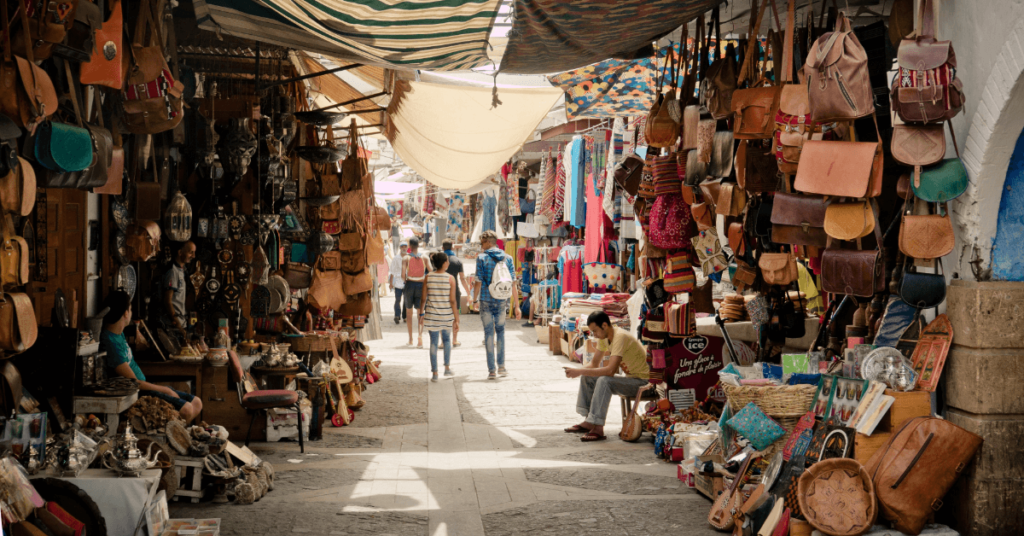
Getting around Morocco: trains, buses, and beyond
Morocco stretches wide, from the white surf of the Atlantic to the gold of the Sahara, with mountain ranges and green valleys in between. Moving across that landscape is easier than it might seem especially once you understand how locals travel. Whether you prefer public transport, private cars, or a bit of both, the options are flexible and surprisingly affordable.
The train network is one of the most efficient in Africa. Operated by ONCF, it connects major cities like Casablanca, Rabat, Marrakech, and Fes. Trains are clean, cheap, and comfortable. First-class tickets come with assigned seats and air conditioning worth it for long rides. The new Al Boraq high-speed train even links Tangier to Casablanca in just over two hours. For city-to-city travel, trains are often the easiest option.
Where rails stop, buses begin. Companies like CTM and Supratours run reliable services across the country, including to places like Chefchaouen, Essaouira, and desert gateways like Merzouga. Buses are slower but reach more remote areas. Booking ahead is smart, especially during holidays.
Inside and between towns, taxis offer flexibility. Petit taxis handle short city rides (each city has its own color), while grand taxis connect nearby towns. Grand taxis are shared vehicles that leave when full great for short distances at low cost. If you’re traveling in a group, you can also hire the whole taxi and set your own schedule.
For full freedom, renting a car is an option. Roads are generally good, especially on main routes. Rural areas may be less maintained, and driving in cities can be chaotic, but for reaching mountain towns or planning a Sahara loop, a rental gives you control. Just make sure you have cash for tolls and a sense of local driving etiquette.
Flights are rarely necessary but can save time. Royal Air Maroc offers domestic routes, especially from Casablanca to southern cities like Dakhla or Laâyoune. For shorter trips, though, trains and buses are often faster door to door.
To help plan your route and choose the best option for each leg of the journey, the transportation guide to Morocco breaks down routes, costs, and tips from personal experience. Whether you’re riding rails or navigating mountain roads, knowing what to expect keeps your trip running smooth.
What to pack for Morocco: essentials for every season
Packing for Morocco means preparing for variety. You might wake up in the cool air of the Atlas Mountains, spend your afternoon in a hot, narrow medina, then sleep under desert stars with a jacket zipped to your chin. The climate shifts with the landscape, and local customs shape what feels appropriate to wear. The goal is to stay comfortable, modest, and light on your feet.
Clothing starts with layers. Lightweight long pants or skirts work in most regions they’re respectful and keep you cool. Add loose-fitting shirts or tunics, and avoid revealing clothes. Morocco is relatively relaxed, especially in tourist zones, but modest dressing shows awareness and earns respect. A scarf or shawl has many uses: for sun, wind, or covering up in sacred spaces.
Shoes matter more than you think. Narrow streets, uneven pavement, and the occasional climb call for sturdy walking shoes. A pair of sandals helps when you’re relaxing in riads or by the beach, but don’t rely on them alone.
Weather adds another layer. In summer, breathable fabrics are key, especially inland where temperatures rise sharply. Along the coast, it’s milder, but windy. Winter can be cold especially in Fes, Ifrane, or the desert after sunset. A fleece, a light jacket, or even gloves might be needed. Spring and fall are the most balanced, but layering remains your friend.
Accessories make travel easier. Sunglasses, sunscreen, and a wide-brimmed hat protect against the sun. A small backpack, reusable water bottle, and travel towel come in handy. Toiletries are widely available, but tissues, hand sanitizer, and any prescription medications should come with you.
Documents and cash round things out. You’ll need a valid passport, travel insurance, and printed or digital copies of hotel and transport bookings. Credit cards work in hotels and large shops, but cash (in Moroccan dirhams) is essential in souks, taxis, and smaller towns.
For a complete checklist adapted to your season, destination, and travel style, the Morocco packing guide covers everything you’ll want to bring and what you can leave behind. Packing smart makes space for souvenirs, peace of mind, and more room to move.
Moroccan food and drink: flavors worth the journey
Eating in Morocco is more than satisfying hunger it’s a way to connect with place, people, and tradition. Meals often start slow, build in flavor, and invite sharing. Whether you’re dining at a family table or grabbing street food on the go, the country’s cuisine tells a story with every bite.
Tagine is the name you’ll hear first. It refers to both the conical clay pot and the stew inside. Chicken with preserved lemon and olives is a classic, but lamb with prunes or vegetable tagines are just as common. Cooked slowly over coals, the dish emerges rich and tender, often served with warm khobz (Moroccan bread) instead of cutlery.
Couscous, traditionally eaten on Fridays, is steamed over hours and topped with meat, chickpeas, and root vegetables. The texture is light, the flavors balanced especially when finished with sweet raisins or caramelized onions.
Street food deserves a place at the table. In Marrakech, try harira (a tomato-based lentil soup) or maakouda (fried potato cakes) at night stalls. In Essaouira, grilled sardines land on your plate minutes after leaving the ocean. Bissara, a thick fava bean soup, is a hearty breakfast in the north, while sfenj (fried doughnuts) pair well with morning coffee.
Sweets often appear with mint tea, which flows at nearly every meal. The tea isn’t just a drink it’s a ritual. Poured from a height into small glasses, it’s sweet, fragrant, and shared as a sign of hospitality. Almond-filled pastries, honey-coated chebakia, or date-based treats often follow.
Drinking alcohol in Morocco is possible, but not common outside of tourist areas and major cities. Most Moroccans don’t drink, and many restaurants don’t serve it. Licensed venues, hotel bars, or certain riads offer wine or beer, especially in places like Marrakech or Casablanca. Water is safe in many cities, but bottled water is easy to find and preferred when traveling.
For those wanting to go deeper into Moroccan flavors, the culinary guide to Morocco explores regional specialties, food customs, and where to find unforgettable meals from family kitchens to open-air markets.
shaping your own Moroccan journey
Traveling to Morocco isn’t just about checking sights off a list it’s about finding your rhythm between the colors, flavors, and sounds. Some travelers fall for the pulse of Marrakech, others for the quiet of the Sahara, or the breeze along Essaouira’s ramparts. Whether you’re sipping tea in a tiled courtyard or walking alone through mountain fog, the experience feels both grounded and timeless.
This guide gave you the broad strokes. From how to move around, where to stay, what to eat, and which cities pull you in each section is a door you can now walk through with more confidence. But the beauty of Morocco lies in what’s not planned. It’s in the side streets, the second cup of tea, the unexpected kindness of a stranger.
If you’re unsure where to begin your adventure, start with a city that speaks to you. The best cities to visit in Morocco can help you match your travel mood with the place that fits best. From there, the road opens wide.

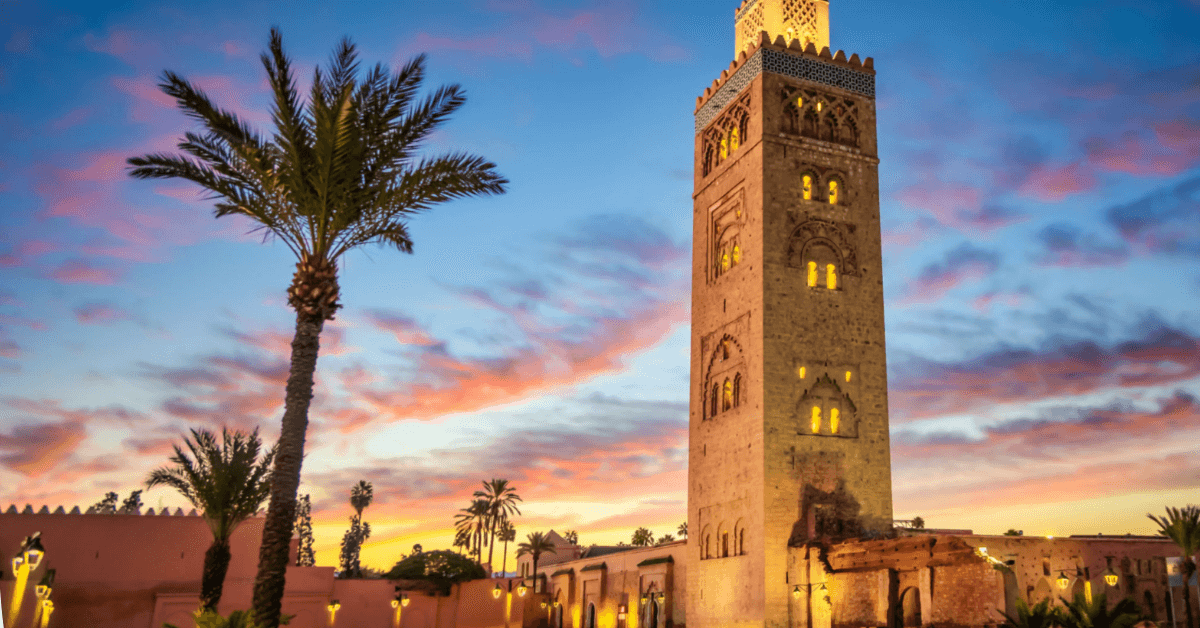
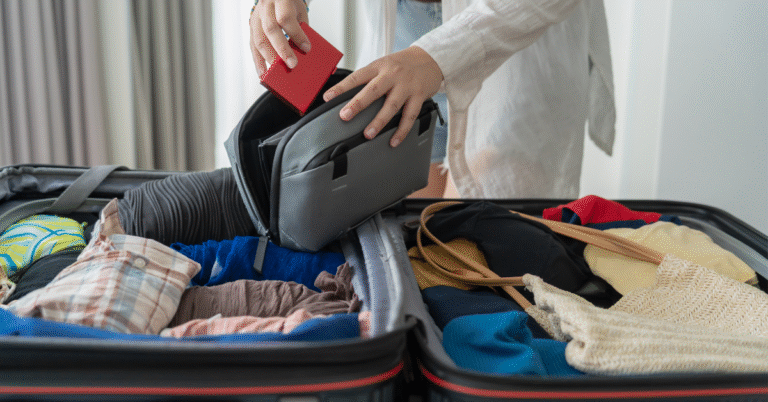
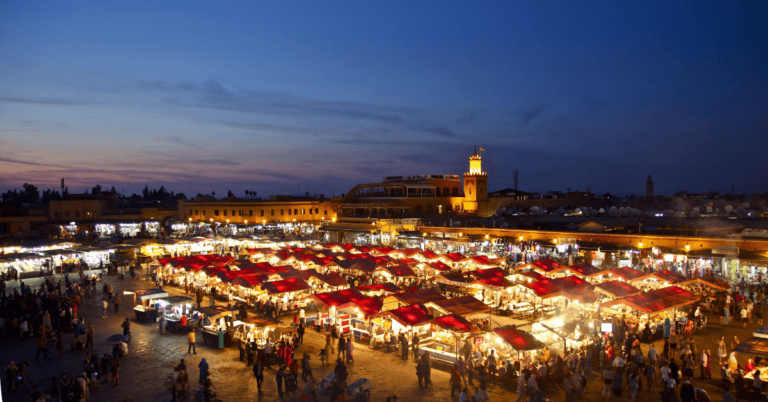
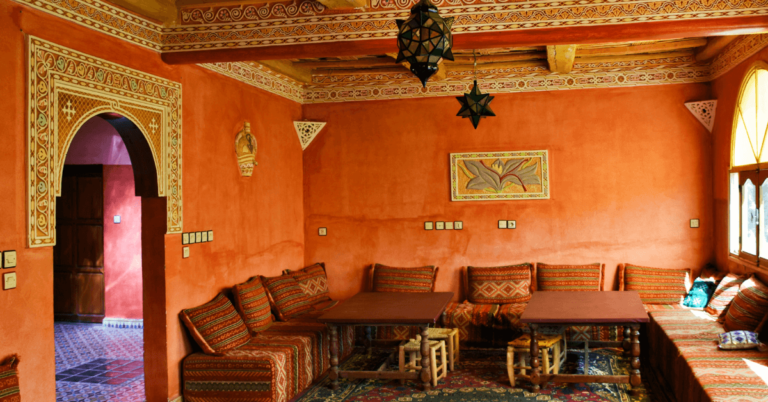
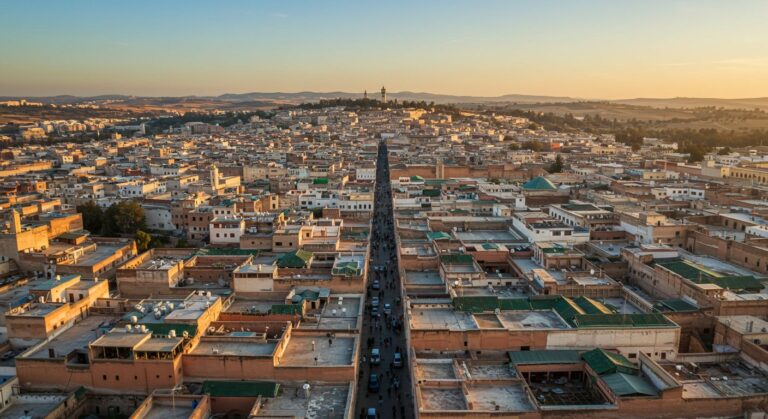
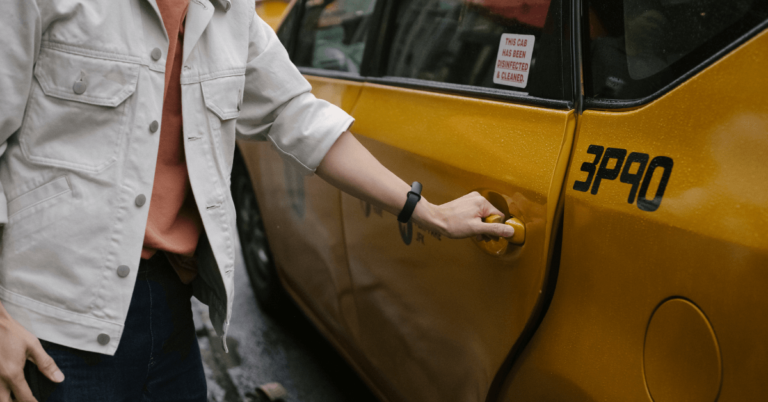
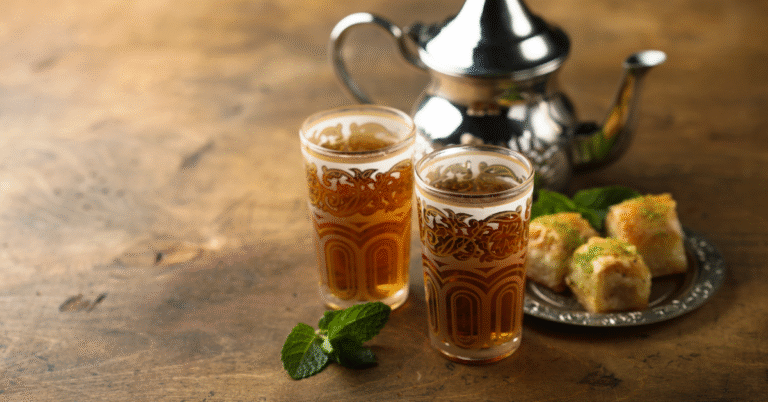
2 Comments